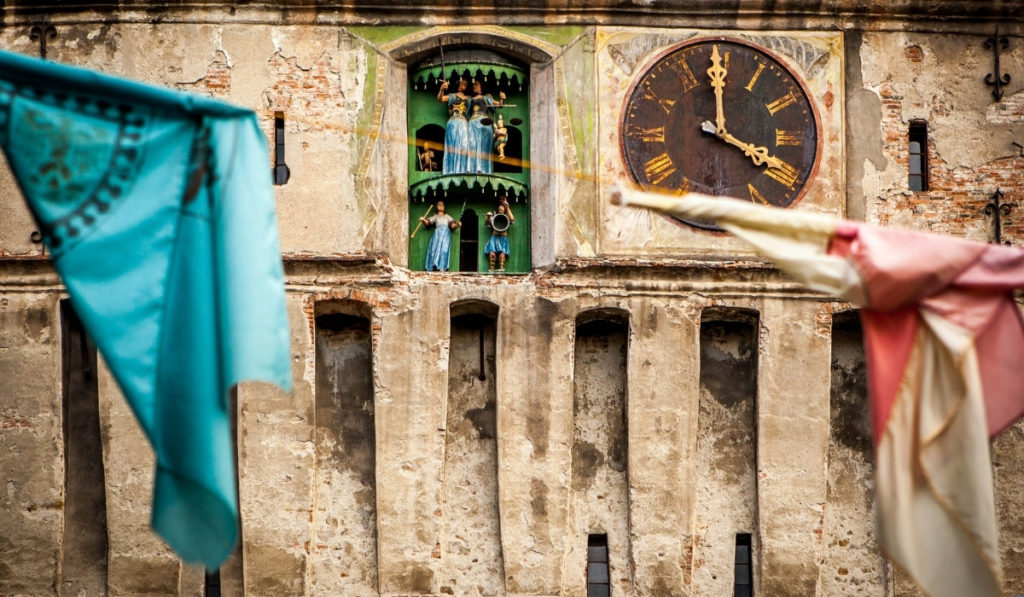This post may contain affiliate links. At no cost to you, purchases made through these links may result in a small commission for Traveling Transylvania. We never recommend products that we don’t know and trust. Thank you for your continued support!
So! We have some news! Szilard, Olly, Andre, Misi, and I have picked up and moved to Sighișoara, Romania. It’s about 2 hours and 30 minutes by car from our house in Cluj-Napoca, so it’s a bit of a serious move!
To be honest, we needed far more space than we had in Cluj, and the crippling rental prices in the city made it quite appealing to look elsewhere. It’s no secret to anyone that Cluj-Napoca has always taken a backseat to my beloved Sibiu, and I’ve never really loved the city – it was far too big and chaotic for me. It’d be great in my youth, but as a mom and full-time worker, I couldn’t take advantage of the fun nightlife anyhow.
We’d visited Sighișoara a few times before, and it ticked all of the boxes for me – well-connected by train, beautiful (I love pretty places), no real need for a car (I still haven’t gotten my Romanian license), and much better food than Cluj has to offer. Our new house has a big yard for the dogs and three times as much living space for virtually the same price! So it was a no-brainer.
Anyway, I had to do a write-up of our new town! While it’s not a big city like Cluj-Napoca, there is no shortage of things to do in Sighișoara. If you’re looking for an amalgam of history, culture, beautiful medieval streets, and spooky vibes, look no further than Sighișoara, Romania.
- About Sighișoara
- How to Get to Sighișoara
- Getting Around Sighișoara
- Top Things to do in Sighișoara
- Take a Guided Walking Tour
- Explore the Citadel
- Head to the Clock Tower
- Visit Vlad Dracula’s Birthplace
- Climb the Covered Staircase
- Check out the Church on the Hill
- Visit the Nine Tower Guilds
- People Watch in Piața Cetății
- Explore Outside the Citadel
- Grab a Bite to Eat in Piața Hermann Oberth
- Take a River Walk
- Check out the Holy Trinity Church
- Experience Sighișoara’s Medieval Festival
- Enjoy the Sighișoara Blues Festival
- Best Places to Eat in Sighișoara
- Best Time to Visit Sighișoara
About Sighișoara
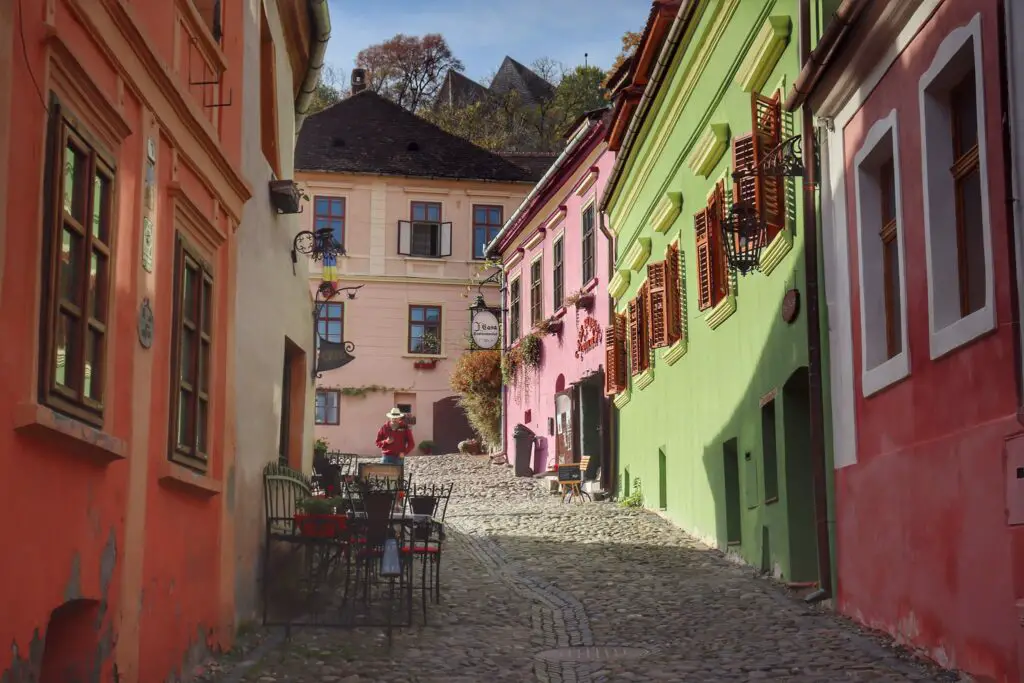
Sighișoara, Romania is a medieval gem nestled in Transylvania that’s an inscribed UNESCO World Heritage Site. It’s known as the birthplace of Vlad the Impaler, more famously known as Dracula. But Sighișoara has much more to offer than just vampire lore.
Founded by German craftsmen and merchants in the 12th century, Sighișoara prospered as a central hub for trade and defense. The fortified town even withstood invasions from Ottoman and Tartar forces. Its well-preserved medieval architecture draws visitors from all over the world, including a 14th century clock tower and the Covered Staircase, a 64 meter long staircase that leads to the Church on the Hill.
But Sighișoara isn’t stuck in the past. The town has a vibrant cultural scene, with regular festivals and events celebrating everything from jazz music to medieval knights. And let’s not forget the delicious traditional Romanian cuisine that can be found in its charming restaurants.
How to Get to Sighișoara
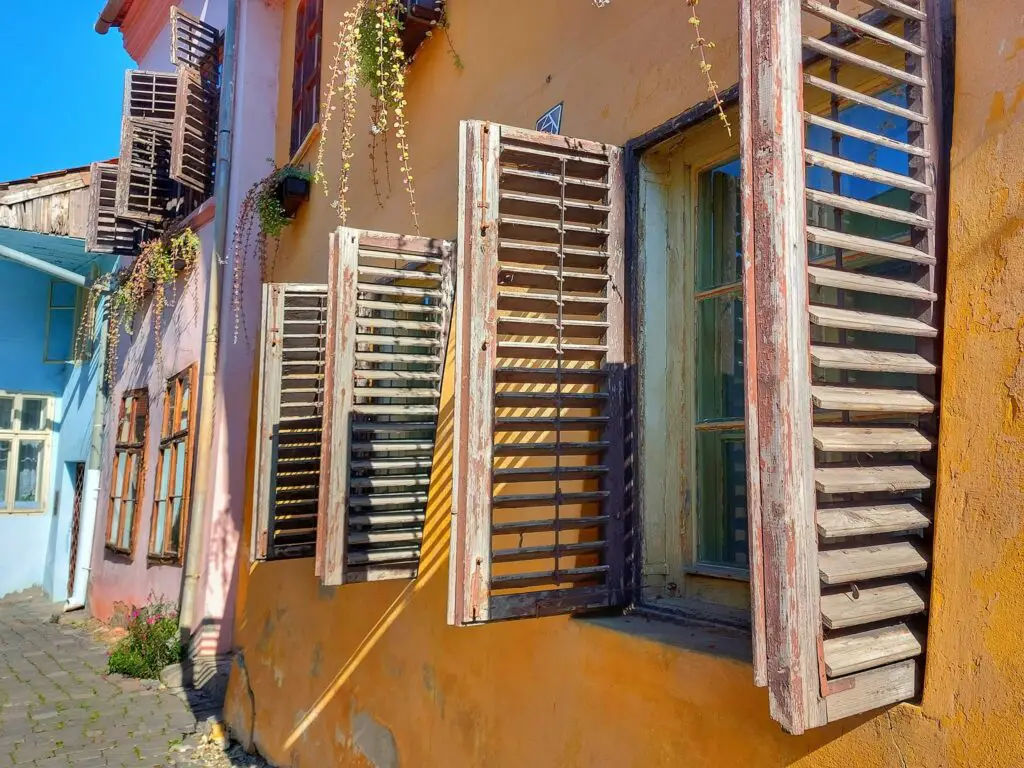
By Plane
You can fly into either Sibiu, Cluj-Napoca, or Targu Mures for the shortest drives from the airport. Cluj-Napoca is the farthest airport but the best connected out of the three. You could also fly into Bucharest, but the train is about 5.5 – 6 hours long! Targu Mures offers the shortest drive from an international airport, however, the airport itself isn’t well-connected.
By Train
Taking the train to Sighișoara is pretty straightforward. You can easily hop on a train from Bucharest, Cluj-Napoca, Sibiu, or Brasov (as well as other Romanian cities) and get to Sighișoara in 3 to 6 hours.
Unfortunately, a snail might outrun the mighty Romanian trains, but I prefer them to the (faster) buses since there are bathrooms on board and you can walk around a bit.
By Bus
Buses run frequently from the aforementioned cities and many pass through Sighișoara. The time is just slightly less than taking the train as there are frequent stops.
By Car
Renting a car in Romania isn’t for the faint of heart, but it’s the fastest and most straightforward way to get around the country. If you plan on visiting some lesser-known sites and exploring the country outside of the main cities, renting a car might be a great option.
Getting Around Sighișoara
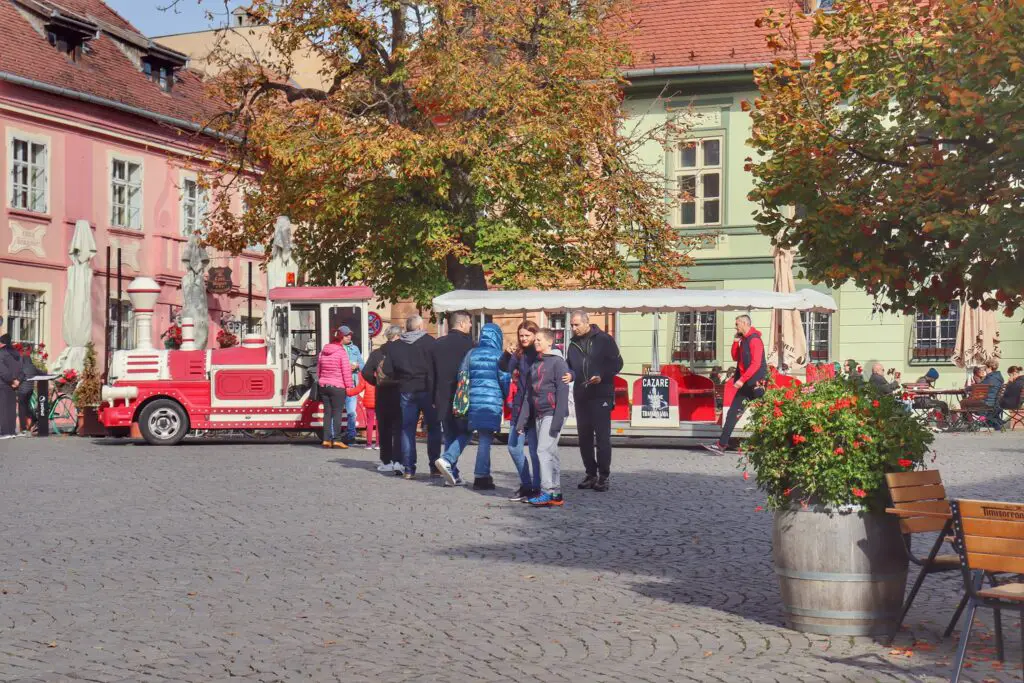
Sighișoara itself is quite small, and it’s easily explored on foot. We moved here a week ago and I have yet to drive anywhere for anything. The citadel itself is easily explored in two hours or so, but you’d be remiss to stay within the fortified walls, as the rest of the city is just as beautiful.
There’s a fun, kitschy trolley that looks like a children’s train that takes tourists throughout the city as well as a regular bus system.
The taxis aren’t very prevalent, but they’re cheap.
Top Things to do in Sighișoara
Take a Guided Walking Tour
Taking a guided walking tour is always my top recommendation when visiting a new city. Although Sighișoara is quite small, you can easily find walking tours to join given the town’s popularity among tourists.
While these walking tours may seem a little too ‘touristy’ for some (myself included, before I actually took one), they oftentimes offer valuable insight that you simply can’t get by exploring a place on your own – after all, you don’t know the history of what happened in that very place you stood, the significance of that particular monument, or the siege that almost happened.
Immerse yourself in the history of this charming, medieval town by learning all about it on a walking tour. In addition to the history and culture you absorb, you also gain a bit of directional sense!
Don’t forget to tip your guide.
Explore the Citadel
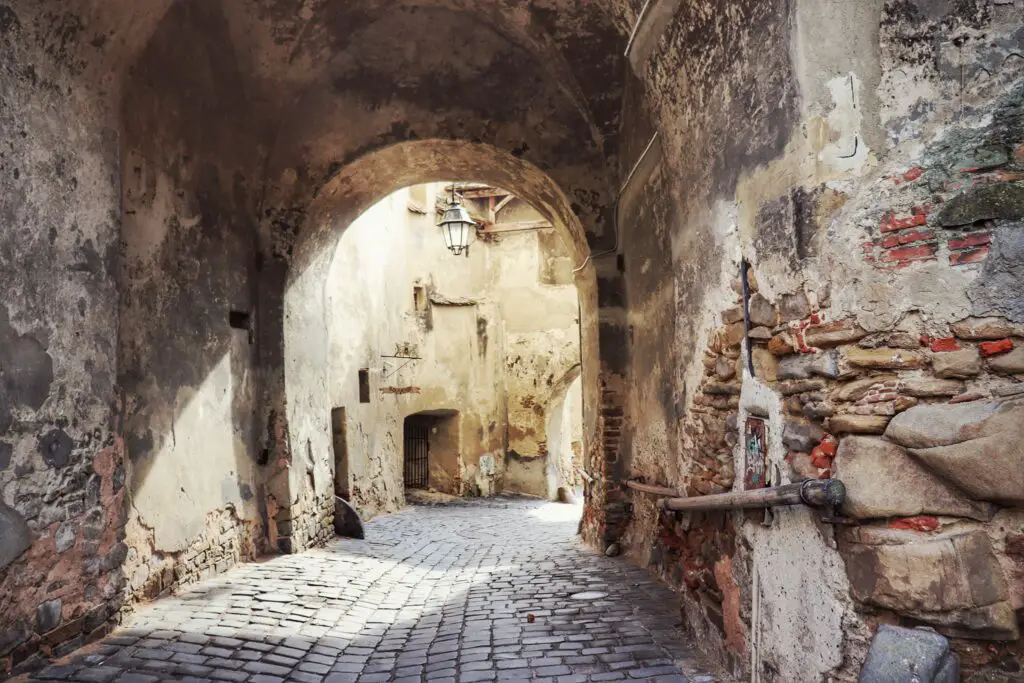
The citadel of Sighișoara is a must-see for any history lover. Built in the 12th century, it was once the center of defense for the Saxon settlers of Transylvania. Today, it serves as a well-preserved example of medieval architecture and fortifications.
Within its walls, you’ll find the Clock Tower, Church on the Hill, and portions of the old city walls and towers. The citadel also houses a history museum complete with artifacts from its time as a military stronghold. Basically, the citadel is what people think of when they think of Sighișoara.
Though it’s super-small and its streets can easily be combed through in just a few hours, it’s among the most beautiful areas in Romania.
Head to the Clock Tower
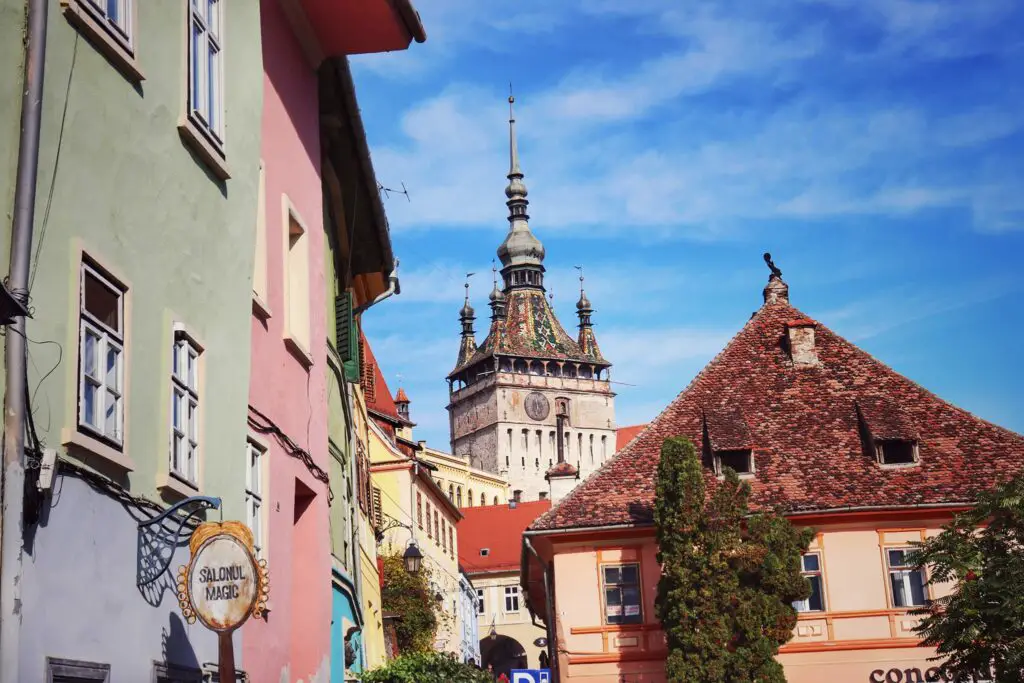
The clock tower of Sighișoara is a sight to behold – rising above the city’s cobblestone streets at 65 meters tall, it has stood since the late 1400s. Its construction was commissioned by the town’s guilds, as a symbol of their power and wealth.
The balcony of the Clock Tower was the most strategic place in town to serve as a watchtower. In an area that had frequent fires and not much water, it was the best place in Sighisoara’s history to see fires in advance. There were only 9 places throughout the city from which to source water, so spotting the flames in advance allowed the townspeople ample time to find water to extinguish the fire.
The Clock Tower is one of the most beautiful medieval structures standing in Sighișoara. What makes it special from other clock towers is the small display of puppets that are housed directly to the left of the clock face.
Today, the clock tower houses a museum filled with artifacts from Sighișoara’s history, including furniture, weapons, and medieval handicrafts.
Visitors have the opportunity to make the climb up the Clock Tower as well. It offers up some spectacular views! After ascending the narrow staircase, you can take in a bird’s eye view of the picturesque town.
But beware – legend has it that in times past, those who angered the guilds were thrown off its top! Thankfully, such punishments are no longer carried out… at least, not officially.
Visit Vlad Dracula’s Birthplace
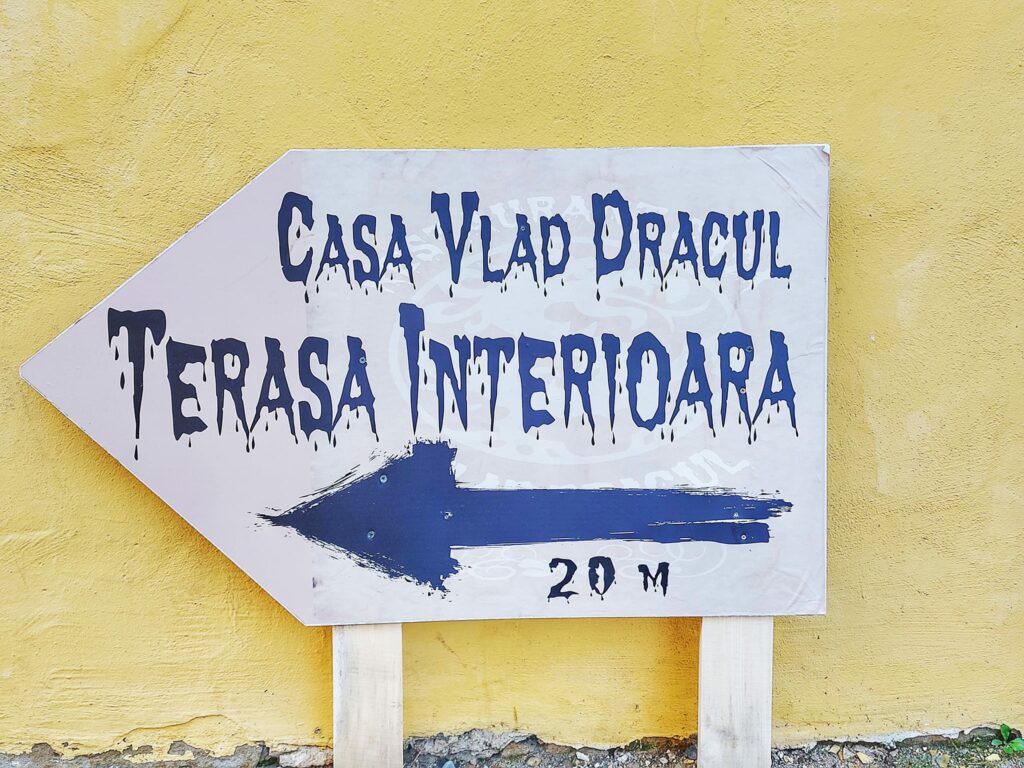
Did you know that Vlad Tepes, better known as Vlad the Impaler or Dracula, was born in Sighișoara in 1431? He only lived in this beautiful medieval town for a few years before being held as a political prisoner by the Turks. However, his birthplace still stands and has been turned into a museum honoring the infamous ruler.
Visiting Vlad’s house is one of the must-do activities in Sighișoara. Inside, you’ll find information about his life as well as artifacts from the time period. It’s definitely worth a visit for any history buffs or fans of vampire lore, though if you’re not so interested, it’s a fairly steep price for a tiny little tour.
Beware of any impalings happening outside… probably best to stick with just viewing them from the safety of the museum.
Climb the Covered Staircase
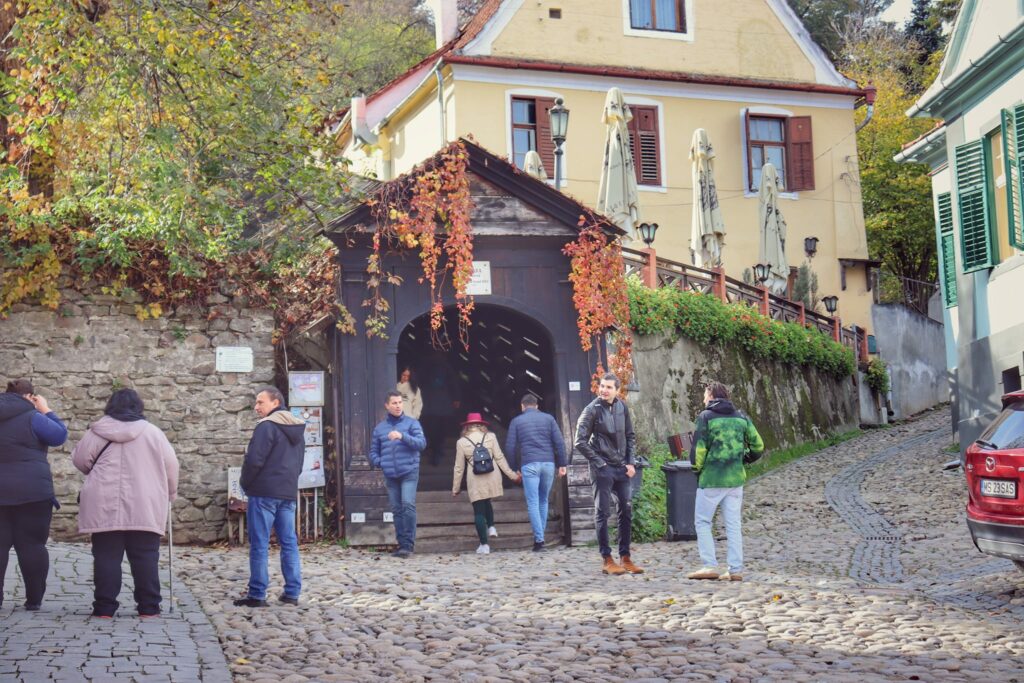
Climbing the covered staircase in Sighișoara may not seem like much of an adventure, but it takes you back in time to when this structure served as a crucial means of defense. Built in the 16th century, the staircase connected the upper and lower parts of the citadel. Its primary use was to protect churchgoers and young schoolchildren from the heavy winter weather. However, in case of attack, residents could also flee to safety within the fortified walls of the citadel should the town be held under siege.
But don’t let its history fool you – this scenic staircase is more than just a relic from the past. Its steep steps offer breathtaking views of Sighișoara’s colorful rooftops and historic churches. Of its original 300 steps, only about 150 remain.
Check out the Church on the Hill
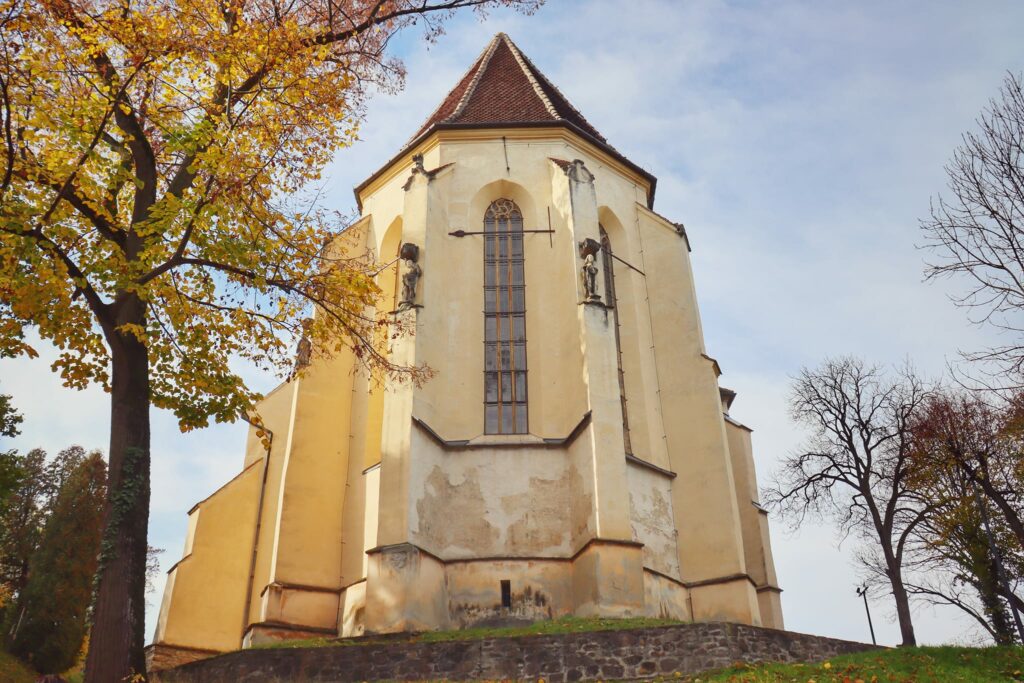
The Church on the Hill in Sighișoara is located at the highest point in the city, offering stunning views as well as a historical gem. The church was built in the 13th century by Saxon settlers and remains open for visitors to this day.
Its thick walls and four watchtowers also served as protection against Ottoman invaders. Inside, visitors can admire intricate frescoes and breathtaking religious art dating back centuries.
But there’s more to this church than just its history – it also houses an impressive collection of ancient musical instruments, including a 16th century wooden harp and a 17th century bassoon. Music lovers won’t want to miss the chance to see these treasures up close.
Visit the Nine Tower Guilds
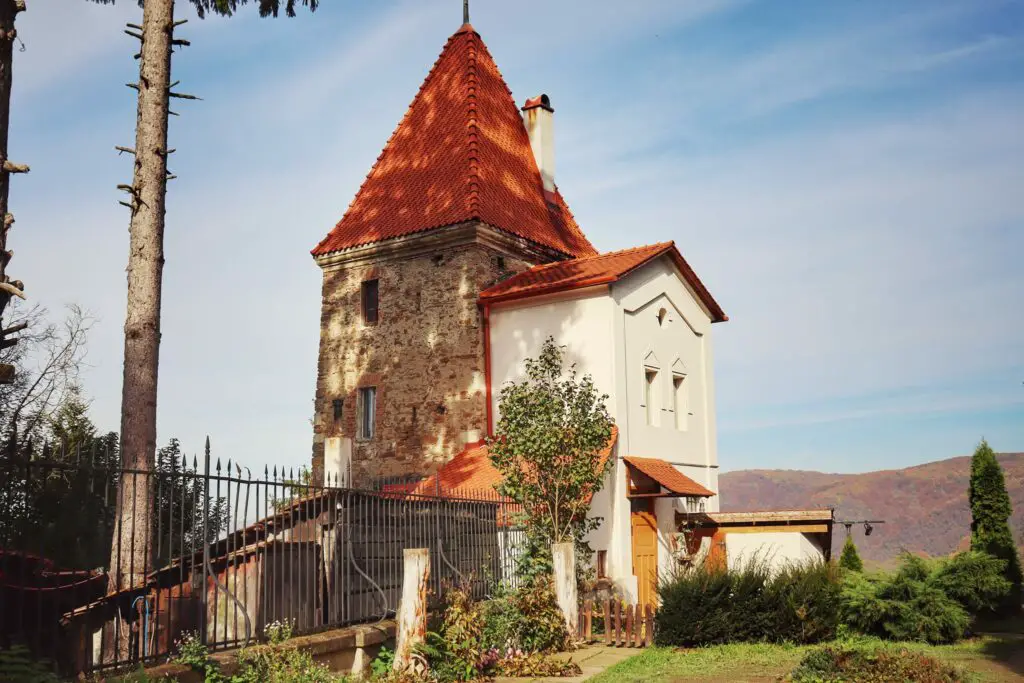
Located in Transylvania, Romania, the Nine Tower Guilds of Sighișoara are a must-see for any history buff or architecture enthusiast. The towers were once used as defense fortifications and housed various guilds and craftsmen during the medieval period.
The towers are all connected by a series of walls and gates, with the most impressive being the 14th century Clock Tower, which also houses a small museum about Sighișoara’s history. The Church on the Hill tower is particularly notable for its Gothic style and Catholic religion – making it quite the contrast from the Orthodox churches found elsewhere in Romania.
Visiting these towers offers a glimpse into Sighișoara’s rich history and its importance as a trading hub during medieval times. Each tower has its own unique architecture and displays artifacts from its respective guild – including tools, furniture, and clothing. And if you’re feeling brave enough, you can even climb to the top of some of the towers for a stunning view of the city below.
While some of the original 14 towers have been converted into restaurants or private residences, some are still open to visitors and offer stunning views of the town below. Don’t miss out on the chance to see these unique structures and imagine life in a medieval guild.
People Watch in Piața Cetății
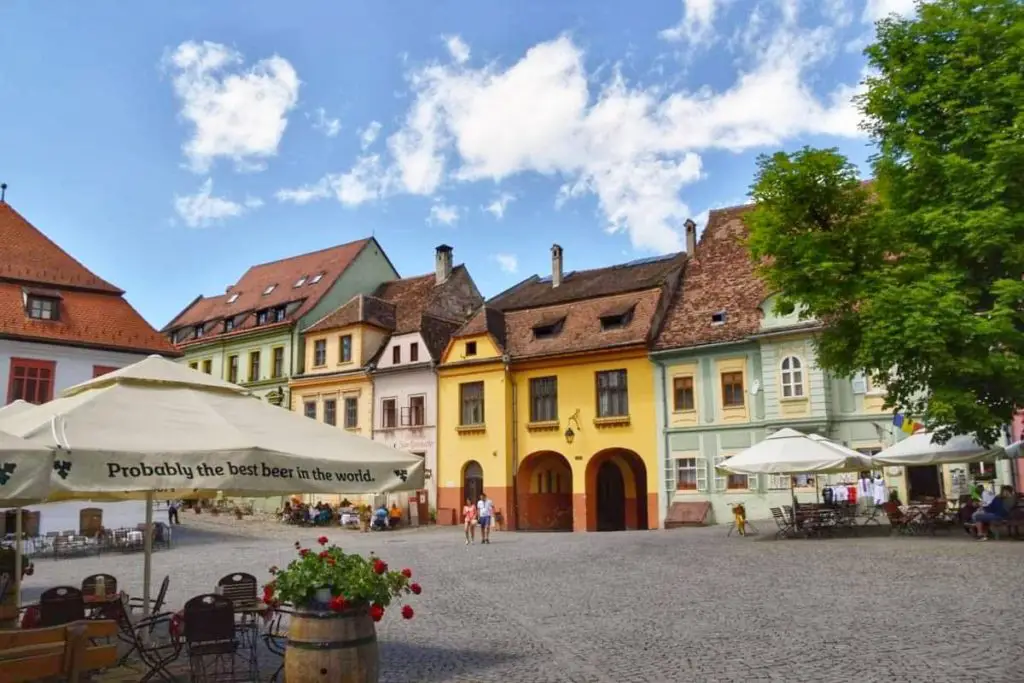
The main square in Sighisoara’s citadel, Piața Cetății is where you can find plenty of terraces to sit down and grab a bite to eat or sip on a coffee (or glass of wine). While I personally recommend eating outside of the citadel, it’s still a lovely spot to people watch, particularly in the warmth of spring or briskness of fall.
Take a small break from sightseeing (or gather your energy for the ascent up the covered staircase) and sit down and relax, letting the tourists of town pass you by.
Explore Outside the Citadel
Before moving here I’d never ventured too far outside of the citadel, aside from finding parking. When we moved into our new house, I was so excited to learn that we were a mere five-minute walk from the center! I didn’t realize that the ‘center’ was not the citadel.
Still, to my pleasant surprise, the center of Sighisoara is much more relaxed, with far fewer tourists, than within the citadel walls.
In addition, the food is better and cheaper than the tourist-oriented restaurants you’ll find in the historic Old Town.
Grab a Bite to Eat in Piața Hermann Oberth
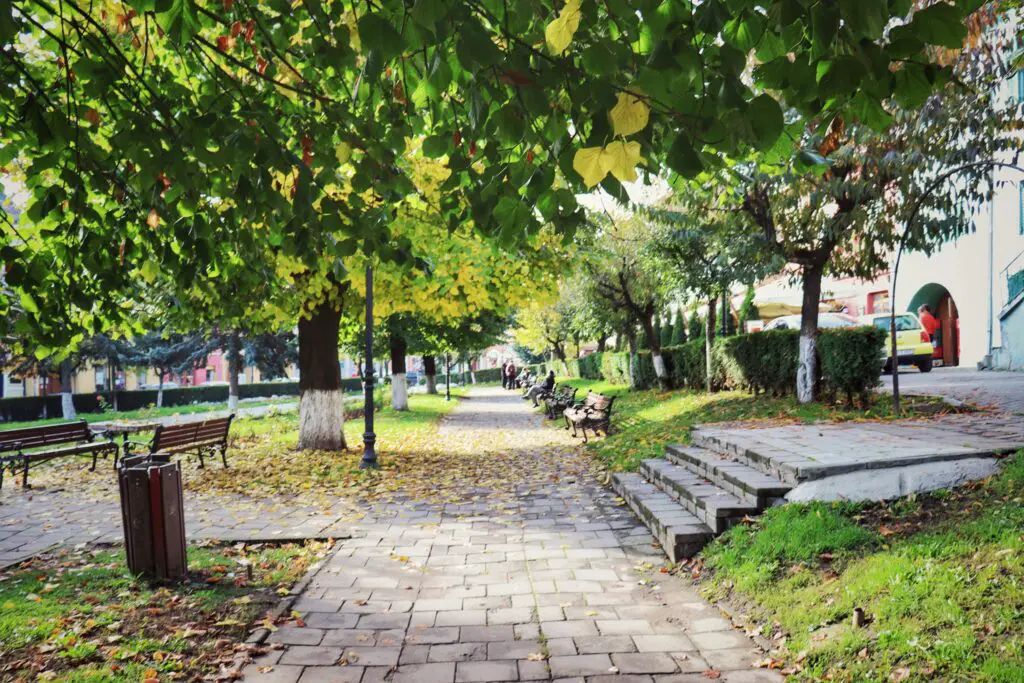
We found a high concentration of delicious restaurants in Piața Hermann Oberth. Both myself and Szilard really like food, and so going out to eat is a beloved pastime of ours. In a weekend’s time, we’d ended up trying three different restaurants, each better than the next.
The top three restaurants are definitely La Perla, La Piazzetta, and Cafe Martini & Habermann, with the latter being my top favorite. Scroll down for more detailed information on all of these restaurants.
Take a River Walk
Venturing a little farther away from the citadel, you’ll see the gorgeous riverwalk on the Târnava Mare River, which has undergone extensive renovations in order to create such a beautiful space to spend a sunny afternoon.
Though there isn’t much to do here in terms of restaurants or parks, you can take a leisurely walk and admire the weeping willows and vibrant, red geranium planters.
Check out the Holy Trinity Church
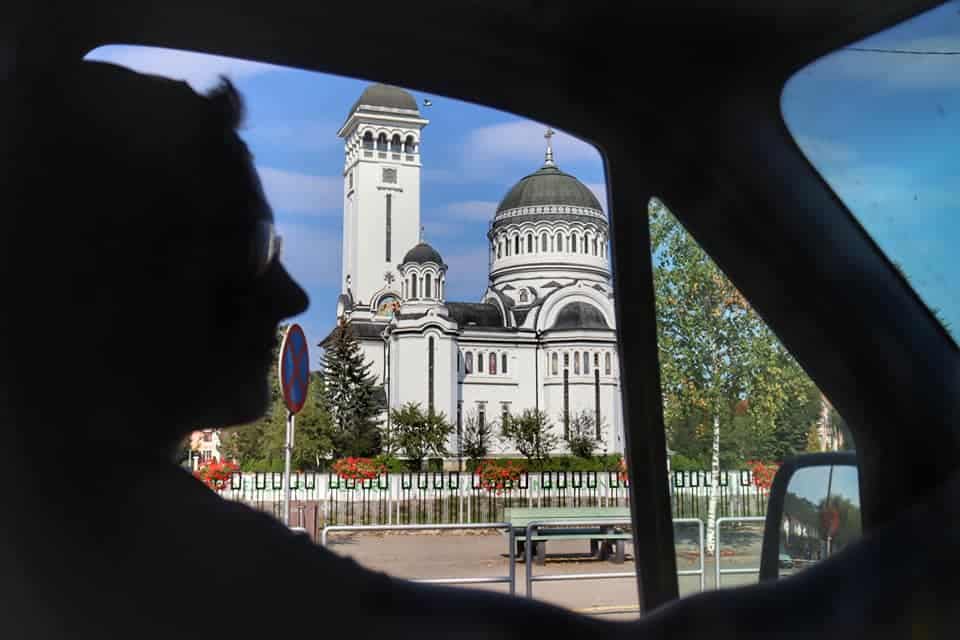
Dominating the landscape across the Târnava Mare is the grandiose Holy Trinity Church. This magnificent Romanian Orthodox Church is tough to miss with its typical Neo-Byzantine architecture, white facade and black domed roof.
The church was built in the 1930s, complete with three church bells, a stunning iconostasis, and ornate frescoes.
You can visit the church for mass or simply to take some photos and admire its beauty.
Experience Sighișoara’s Medieval Festival
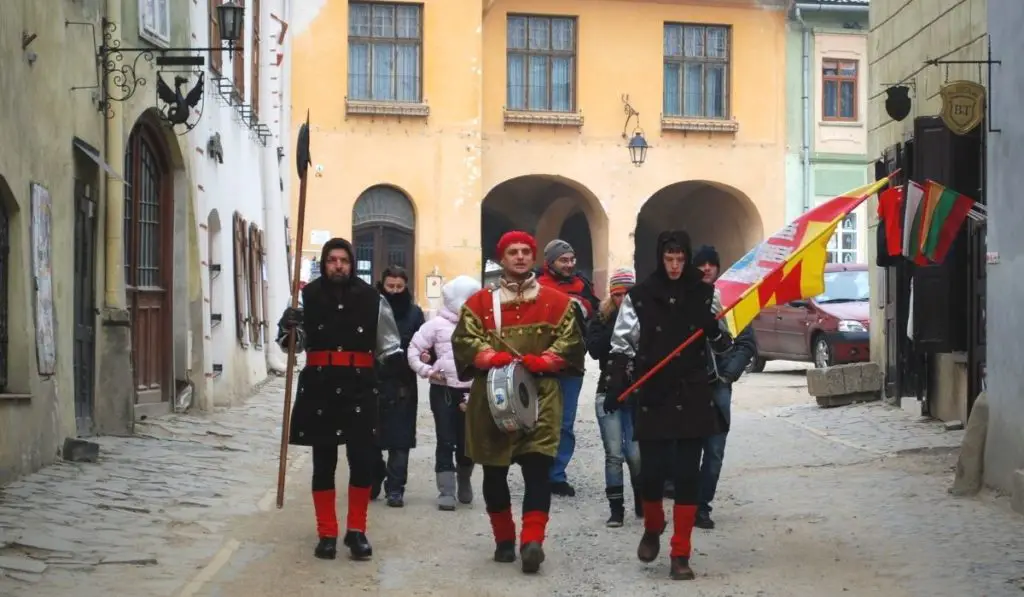
The Medieval Festival in Sighișoara usually takes place in the second half of July, turning the charming old town into a hub of medieval revelry. The festival features jousting tournaments, craftsmen markets, live music and performances, and traditional feasts fit for a king.
Don’t miss the colorful parade through the streets, featuring costumed performers and historic reenactments. Embrace your inner knight or damsel in distress and join in the festivities at one of Romania’s most well-preserved medieval cities.
It’s a perfect chance to experience all the magic and charm of the Middle Ages while enjoying great food and entertainment.
Enjoy the Sighișoara Blues Festival
The Sighișoara Blues Festival is the second of Sighisoara’s most famous festivals. It typically takes place in the summer months, providing a perfect opportunity for blues lovers to soak up some sun while enjoying incredible live music. Highlights of the festival include performances from renowned international artists as well as talented local acts, workshops and jam sessions, and a chance to explore the beautiful historic city of Sighișoara, Romania.
Attendees can enjoy performances by international and Romanian blues artists, as well as special events such as jam sessions and workshops. Past headliners have included Grammy award-winning artist Joe Louis Walker and Romanian singer Loredana Groza.
The festival also offers a diverse array of food and beverage options, from traditional Romanian cuisine to international favorites.
Best Places to Eat in Sighișoara
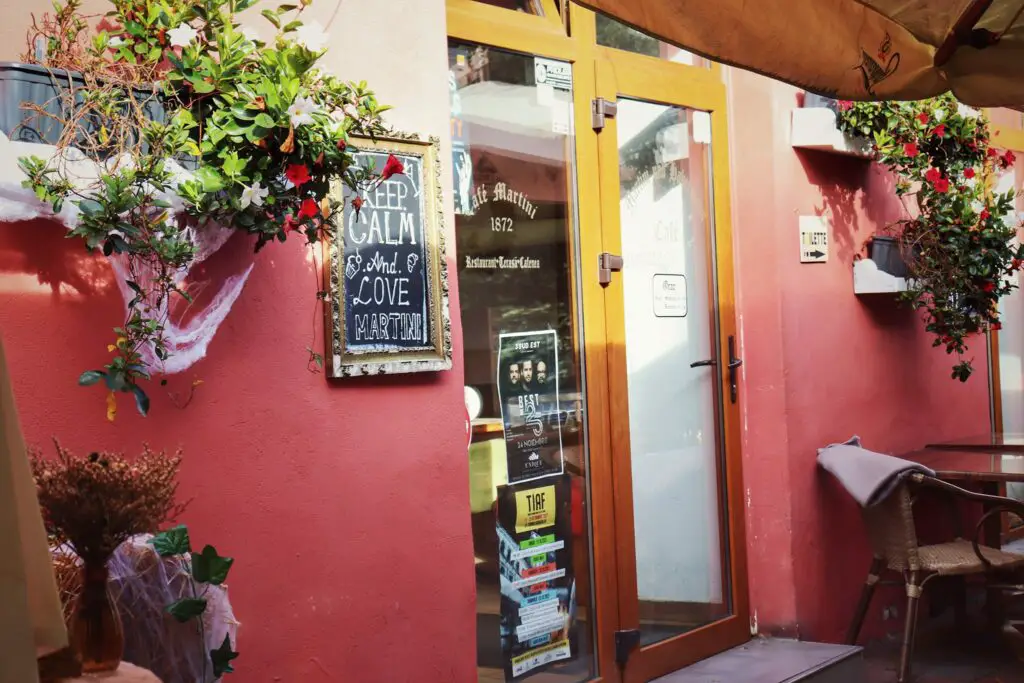
Cafe Martini & Habermann
This gem in the center of Sighișoara has never disappointed. Szilard and I go here multiple days in a row (and also order delivery) to try new dishes. Everything is always fantastic (by Romanian standards)!
The menu generally consists of traditional Romanian food with a few different options. The Tochitura Dracula is a stand-out, as well as the Ribs in Secret Sauce. Try their homemade garlic sauce – it’s the best I’ve had in Romania. The breakfast is really good too!
The staff is also, without question, the friendliest in town. We go so often that we frequently see employees out and about in town. They always greet us as friends and we stand to chit chat a bit.
La Perla
La Perla is consistently rated among the top restaurants in Sighișoara. It was the first restaurant we tried here after deciding that Sighișoara would be our new home. We’ve been several times since, each time being equally as delicious as the last.
My personal favorites at La Perla are the Stuffed Chicken and the Braised Rabbit or their signature steak. If you’re hungry for breakfast, their omelets are super-filling!
The staff leaves a bit to be desired – no one seems particularly enthusiastic or friendly, and it’s very slow at times.
La Piazzetta
Don’t let the name fool you – La Piazzetta in Sighișoara serves more than just pizza. Their menu is a combination of traditional Romanian and Italian food, perfectly hearty dishes to warm you up on a chilly fall evening.
Try the Bean and Ciolan Soup in Bread, the Ribs with Fries, or the Pork Tenderloin. Yum!
Restaurant Michelangelo
As someone who used to live in Italy, I was pleasantly surprised with the caliber of food at Restaurant Michelangelo. It’s a relatively new discovery for us and we’ve only been twice now, but for sure it’s among the best restaurants in Sighisoara.
Try the Bolognese or the Tagliatelle with Cinghiale (Wild Boar). The Zucchini Parmesan is delish, too!
Best Time to Visit Sighișoara
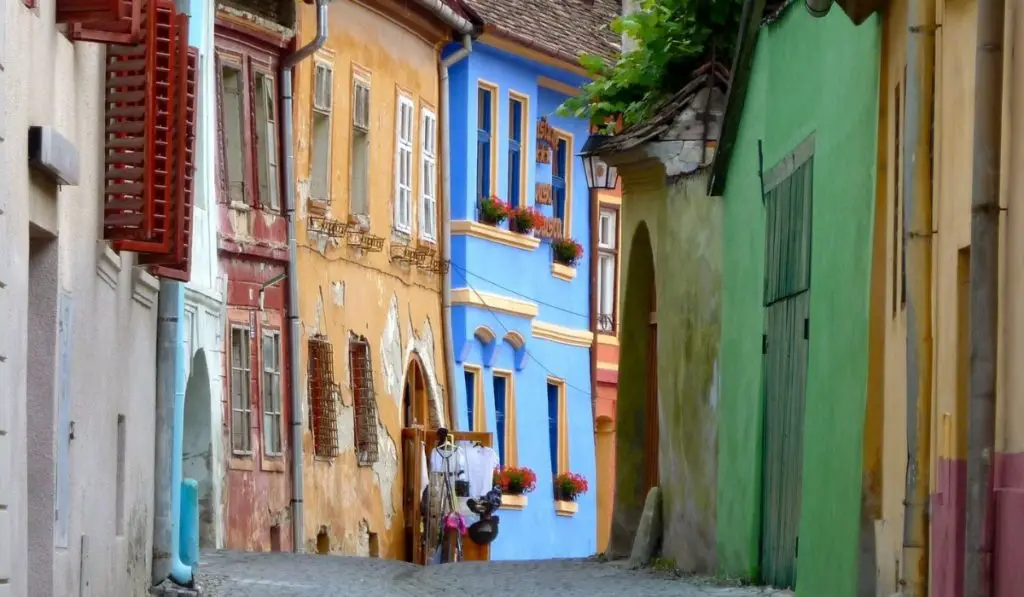
Spring
Spring in Sighișoara is a nice time to visit. When the warmth of the season first hits, Romania is filled with pops of color as things come back to life and into bloom. Terrace season is officially upon us, so you can take advantage of eating outside (with space heaters and provided blankets if you’d like). Spring is a great time to visit Sighișoara if you’d like some pleasant weather with fewer tourists, as the high-season hasn’t really begun yet.
Summer
If you don’t mind the crowds, summer is the best time to visit Sighișoara. You can take part in the town’s lively festivals, venture out and explore Mures county, or simply enjoy the cooler air that occurs at this elevation.
Tourists arrive in full-force during the summer months in Sighișoara, however, so if crowds aren’t your thing, you might want to opt for different dates. This also means that accommodation will be more expensive and more difficult to find with short notice.
Summer is also when you’ll be able to check out the Medieval Festival of Sighisoara!
Fall
Fall can be a really cool time to visit Sighișoara, particularly if you’re a vampire enthusiast. Although Romania doesn’t celebrate Halloween, of course the town has to milk the season for its obvious cash cow during these months.
The chilly air and blustering Romanian winds provide the perfect backdrop to explore Vlad III Tepes’ house and the surrounding graveyards of Sighișoara.
Be sure to check out the German cemetery next to the Church on the hill.
Winter
Winter is probably the ‘worst’ time to visit Sighișoara, if such a thing exists. That being said, you can find great prices on accommodation and far fewer crowds.
Don’t let me dissuade you from visiting during winter, however, as there are still plenty of things to do in Sighișoara in winter. Check out the festivities for Christmas, including the local Christmas market, enough Cozonac to fatten you up for winter, and of course, the picturesque snowfall.
The terraces are still open during winter, with space heaters and blankets draped over the back of each chair, perfect to cozy up and drink a mulled wine.
